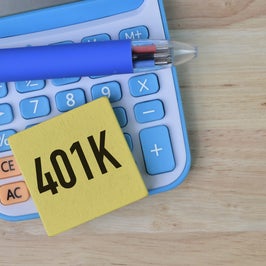Simple IRA Max Contribution 2023

If you’re trying to save for retirement, contributing up to the maximum allowed contribution to a SIMPLE IRA may help you reach your goals.
What is a SIMPLE IRA?
A SIMPLE IRA is a retirement savings plan that is designed for small business owners. For small business owners who have employees, the plan works like a 401(k), because both the employer and the employee can contribute to the plan. A SIMPLE IRA offers tax benefits for both employers and employees.
SIMPLE stands for Savings Incentive Match Plan for Employees, and it’s often a good fit for small business owners because it doesn’t involve the same paperwork and reporting that are required for 401(k) plans and other workplace retirement plans. Employers that manage SIMPLE IRAs are required to make contributions, but employees can choose to contribute or not.
When employees contribute to their employer-sponsored SIMPLE IRA, they can lower their overall taxable income. That’s because the contributions they make to the plan aren't taxed until they withdraw the funds in retirement. When you do make withdrawals from your account in retirement, they're taxed as normal income.
Not every employer is eligible to offer a SIMPLE IRA, and not every employee is eligible to participate. To be eligible, an employer must have 100 or fewer employees, and it must make contributions every year.
In order to participate in their employer’s SIMPLE IRA, an employee must have received at least $5,000 in compensation during the past two calendar years, and they must expect to be paid that much in the current year. Employers can adjust the requirements if they apply the same requirements to all employees, and they don’t have to allow an employee to participate if that employee receives union benefits.
SIMPLE IRA employer contributions
If an employer chooses to offer a SIMPLE IRA, they are required to make contributions on behalf of each qualifying employee. Employers must contribute 2% of an employee’s salary to the plan, or they can choose to match the employee’s contribution of up to 3% of their salary.
Basically, for employees, a SIMPLE IRA offers free money. That’s because their employer is required to automatically contribute to their plan. And when employees make their own contributions as well, they can reduce their taxable income (and the amount of taxes they owe) while growing their retirement portfolio at the same time.
SIMPLE IRA max contribution for 2023
If you are an employee with access to a SIMPLE IRA, your max contribution for 2023 is $15,500. If you’re age 50 or older, you're eligible to make an additional catch-up contribution of $3,500, bringing your SIMPLE IRA max contribution to $19,000.
If you have employer matching available to you, that means your employer offers a dollar-for-dollar match to your own contribution up to a certain percentage.
For example, say your employer will match employee contributions up to 3% of an employee’s salary. If you earn $60,000 and you contribute 3% of your salary to your SIMPLE IRA, your pre-tax contributions will be $1,800 per year. That means your taxable income will be reduced by $1,800, so you only have to pay tax on $58,200. Also, thanks to your employer’s dollar-for-dollar match, you’ll also get an extra $1,800 contributed to your retirement account each year.
Aiming to max out your SIMPLE IRA and contribute the full $14,000 (or $17,000 if you’re 50 and older)? That can be a wise move for your retirement, but make sure you’re aware of all the rules. One rule to keep in mind is that the IRS won't allow a taxpayer to max out both a SIMPLE IRA and another employer-sponsored retirement plan, such as a 401(k), in the same year.
Employers aren't allowed to offer both a 401(k) and a SIMPLE IRA, so you’d only be able to participate in two plans if you changed jobs during the year, held multiple jobs, or if your employer changed its retirement plan during the year.
SIMPLE IRA vs. Roth IRA
Even if you’re maxing out your SIMPLE IRA contribution, there’s no rule against contributing to your retirement in other (non-employer sponsored) ways. For example, if you want to invest more for your retirement than the SIMPLE IRA max contribution, you can invest in an individual retirement account (IRA). You’re allowed to contribute up to $6,500 in a traditional or Roth IRA, or $7,500 if you are age 50 or older.
While you can only contribute to a SIMPLE IRA through your employer, anyone who earns money within certain limits can contribute to a Roth IRA. You have to open your own Roth IRA at the investment firm of your choice. Acorns Later can help match you to the Traditional, Roth, or SEP IRA that works best for your personal situation.
Income limits
To contribute to a Roth IRA in 2023, you must not earn more than $153,000 as an individual or $228,000 for married couples filing a joint return. Also, your Roth IRA contribution cannot be more than 100% of your taxable income for the year.
Income taxes
Contributions to a Roth IRA are made after tax, so they don’t reduce your taxable income for the current year. However, they grow tax-free, so when you make a qualified withdrawal in retirement, you will not owe any taxes on the funds. On the other hand, contributions to a SIMPLE IRA are made with pre-tax income, so they will be taxed at your regular tax rate upon withdrawal in retirement.
Accessing your money
Both a Roth IRA and a SIMPLE IRA are designed for retirement savings, but you can access the money before you reach retirement age if needed. If you do, though, you may have to pay a penalty.
With a Roth IRA, you can withdraw your contributions at any time because you’ve already paid taxes on them. You will have to pay taxes and a penalty if you take out any of your earnings without a qualified distribution.
With a SIMPLE IRA, you can never withdraw your contributions without paying taxes on them because you didn’t pay taxes on that money before you invested it. If you make withdrawals before you reach age 59 ½, you’ll not only pay taxes on the funds, but you’ll also pay an additional 10% penalty for an early withdrawal. If you make withdrawals during your first two years of participating in the plan, the penalty will be 25%.
However, there are some exceptions to the additional taxes.
As long as you can keep your funds invested, both SIMPLE IRAs and Roth IRAs can be important vehicles for growing retirement income. The funds can be invested in a variety of options, including stocks, bonds, mutual funds, and exchange-traded funds (ETFs). The institution that holds your IRA account will likely offer a number of different investments to choose from. If you’re not sure which ones to select, consider an automated investing platform such as Acorns Later, which can recommend an ETF portfolio that will best fit your personal goals and risk tolerance.
This material has been presented for informational purposes only. The content is generalized and may not be appropriate for all investors. The information contained in this article should not be construed as, and may not be used in connection with, an offer to sell, or a solicitation of an offer to buy or hold, an interest in any security or investment product. Carefully consider your financial situation, including investment objective, time horizon, risk tolerance, and fees prior to making any investment decisions. Acorns is not engaged in rendering tax, legal or accounting advice. Please consult a qualified professional for this type of service.








